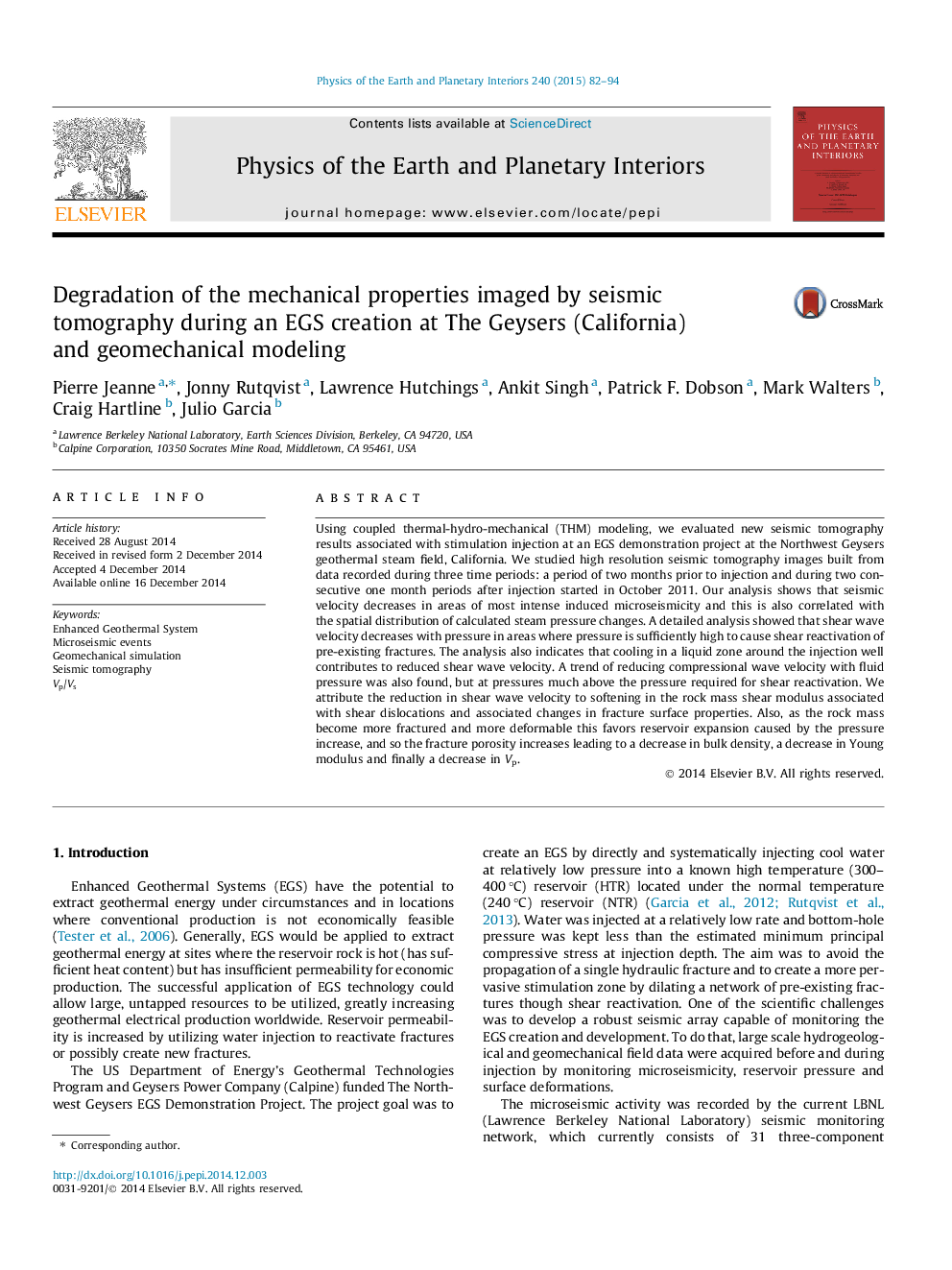| کد مقاله | کد نشریه | سال انتشار | مقاله انگلیسی | نسخه تمام متن |
|---|---|---|---|---|
| 4741540 | 1641501 | 2015 | 13 صفحه PDF | دانلود رایگان |

• The main cause of inducing MEQ is related to injection-induced pressure increase.
• VS decreases in areas where shear reactivation of pre-existing fractures occurred.
• Shear dislocations and changes in fracture surface properties soften the rock mass.
• The pressure increase caused the reservoir expansion and increases in fracture porosity.
• There is a decrease in bulk density, a decrease in Young modulus and finally a decrease in VP.
Using coupled thermal-hydro-mechanical (THM) modeling, we evaluated new seismic tomography results associated with stimulation injection at an EGS demonstration project at the Northwest Geysers geothermal steam field, California. We studied high resolution seismic tomography images built from data recorded during three time periods: a period of two months prior to injection and during two consecutive one month periods after injection started in October 2011. Our analysis shows that seismic velocity decreases in areas of most intense induced microseismicity and this is also correlated with the spatial distribution of calculated steam pressure changes. A detailed analysis showed that shear wave velocity decreases with pressure in areas where pressure is sufficiently high to cause shear reactivation of pre-existing fractures. The analysis also indicates that cooling in a liquid zone around the injection well contributes to reduced shear wave velocity. A trend of reducing compressional wave velocity with fluid pressure was also found, but at pressures much above the pressure required for shear reactivation. We attribute the reduction in shear wave velocity to softening in the rock mass shear modulus associated with shear dislocations and associated changes in fracture surface properties. Also, as the rock mass become more fractured and more deformable this favors reservoir expansion caused by the pressure increase, and so the fracture porosity increases leading to a decrease in bulk density, a decrease in Young modulus and finally a decrease in Vp.
Journal: Physics of the Earth and Planetary Interiors - Volume 240, March 2015, Pages 82–94